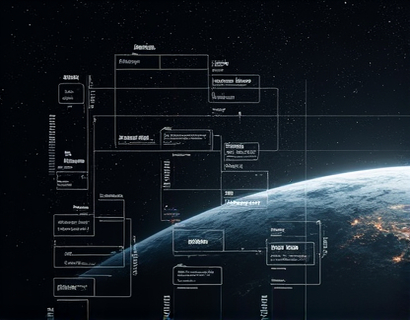Agricultural Software: Transforming Farming Efficiency with Customized Tech Solutions
In the rapidly evolving landscape of agriculture, the integration of advanced software solutions has become pivotal in transforming farming efficiency and productivity. These technological advancements are not merely tools but strategic assets that empower farming professionals and industry experts to navigate the complexities of modern agriculture. The focus here is on how customized tech solutions are revolutionizing agricultural operations, enhancing efficiency, and supporting strategic decision-making.
Enhancing Efficiency Through Automation
One of the primary ways agricultural software is transforming farming is through automation. Automated systems can manage a wide range of tasks, from irrigation and fertilization to harvesting and inventory management. By automating routine and repetitive tasks, farmers can significantly reduce the time and labor required, allowing them to focus on more critical aspects of their operations. For instance, precision irrigation systems use sensors and data analytics to optimize water usage, ensuring that crops receive the exact amount of water they need without waste.
Automation also extends to machinery and equipment. Modern tractors and harvesters equipped with GPS and automated steering systems can operate with high precision, reducing overlaps and ensuring consistent coverage. This not only improves efficiency but also minimizes soil compaction and fuel consumption. The integration of drones for aerial surveillance further enhances monitoring capabilities, providing real-time data on crop health, soil conditions, and pest infestations.
Improved Data Management
Data is the backbone of modern agriculture, and effective data management is crucial for informed decision-making. Agricultural software solutions offer robust platforms for collecting, storing, and analyzing vast amounts of data. These platforms can integrate data from various sources, including weather stations, soil sensors, and satellite imagery, providing a comprehensive view of the farm's operations.
Data management systems help farmers track key performance indicators such as crop yields, input usage, and financial metrics. By having access to real-time and historical data, farmers can identify trends, make data-driven decisions, and optimize resource allocation. For example, analyzing past harvest data can help predict future yields and inform planting schedules, while monitoring soil moisture levels can guide irrigation practices.
Strategic Decision Support
Strategic decision support is another critical area where agricultural software shines. Advanced analytics and machine learning algorithms can process complex data sets to provide actionable insights. These insights can guide farmers in making informed decisions about planting, harvesting, and marketing their products.
For instance, predictive analytics can forecast weather patterns and market trends, helping farmers plan their activities accordingly. Decision support systems can also recommend optimal crop rotations, fertilizer applications, and pest management strategies based on current conditions and historical data. This level of support not only enhances productivity but also promotes sustainable farming practices by minimizing the use of resources and reducing environmental impact.
Enhancing Crop Management
Crop management is a fundamental aspect of agriculture, and software solutions offer powerful tools to optimize this process. Precision agriculture technologies, such as variable rate application (VRA), allow farmers to apply inputs like fertilizers and pesticides precisely where they are needed, reducing waste and improving efficiency. This targeted approach ensures that crops receive the necessary nutrients and treatments, leading to healthier plants and higher yields.
Additionally, crop monitoring systems using drones and satellite imagery provide detailed insights into crop health. These systems can detect issues such as nutrient deficiencies, disease outbreaks, and pest infestations at an early stage, enabling timely interventions. By monitoring crop growth and health continuously, farmers can adjust their management practices to maximize productivity and minimize losses.
Supply Chain Optimization
Beyond the farm, agricultural software plays a vital role in optimizing the supply chain. From procurement of inputs to distribution of produce, these solutions streamline operations and reduce costs. Supply chain management software can track inventory levels, manage orders, and coordinate logistics, ensuring that everything runs smoothly and efficiently.
For example, inventory management systems help farmers keep track of seed stocks, fertilizers, and other inputs, preventing shortages and overstocking. Order management systems facilitate communication between farmers, suppliers, and distributors, ensuring that products reach the market in optimal condition and on time. This level of coordination not only improves operational efficiency but also enhances customer satisfaction.
Market Access and Sales Enhancement
Agricultural software also aids in accessing new markets and enhancing sales. E-commerce platforms and online marketplaces enable farmers to reach a broader customer base, including both local and international buyers. These platforms provide tools for creating product listings, managing orders, and handling payments, simplifying the process of selling agricultural products.
Moreover, data analytics can help farmers understand market trends and consumer preferences, allowing them to tailor their products and marketing strategies accordingly. By leveraging this information, farmers can identify new opportunities, optimize pricing, and improve their competitive edge in the market.
Sustainability and Environmental Impact
The environmental impact of agriculture is a growing concern, and software solutions are playing a crucial role in promoting sustainable practices. Precision agriculture techniques, supported by software, help reduce the use of chemicals and water, minimizing the environmental footprint of farming operations. By applying inputs more efficiently, farmers can lower their costs and reduce pollution.
Additionally, software can assist in carbon footprint tracking and management. By monitoring and analyzing data related to energy usage, transportation, and waste management, farmers can identify areas for improvement and implement strategies to reduce their carbon emissions. This not only contributes to environmental sustainability but also aligns with global efforts to combat climate change.
Challenges and Considerations
While the benefits of agricultural software are numerous, there are challenges and considerations that farmers and industry professionals must address. One of the primary challenges is the initial cost of implementing these technologies. High upfront investments can be a barrier for small-scale farmers and those in developing regions. However, the long-term benefits in terms of increased efficiency and productivity often justify the investment.
Another consideration is the need for technical expertise. Farmers and their staff must be trained to use these systems effectively. Providing comprehensive training and support is essential to ensure that the technology is utilized to its full potential. Additionally, data security and privacy are critical concerns, as sensitive information must be protected from unauthorized access.
Future Trends in Agricultural Software
The future of agricultural software is promising, with several emerging trends set to further transform the industry. One such trend is the integration of artificial intelligence (AI) and machine learning (ML) to enhance decision-making and automation. AI can analyze vast amounts of data to provide more accurate predictions and recommendations, while ML algorithms can improve over time, adapting to new data and improving performance.
Another trend is the development of integrated platforms that combine multiple functionalities into a single solution. These all-in-one platforms can streamline operations by providing a unified interface for managing various aspects of farming, from crop management to supply chain logistics. This integration not only simplifies the user experience but also enhances data consistency and accuracy.
Furthermore, the rise of the Internet of Things (IoT) is opening new possibilities for real-time monitoring and control. IoT devices can collect data from the field and transmit it to central systems for analysis, enabling continuous monitoring and immediate responses to changing conditions. This level of connectivity and responsiveness is crucial for optimizing farm operations and ensuring maximum efficiency.
Conclusion
Agricultural software is revolutionizing the way farming is conducted, offering a range of benefits that enhance efficiency, productivity, and sustainability. From automation and data management to strategic decision support and supply chain optimization, these technologies are empowering farmers and industry professionals to succeed in a competitive market. As the industry continues to evolve, the integration of advanced technologies like AI, ML, and IoT will further drive innovation and transformation in agriculture.
Embracing these technological advancements is not just an option but a necessity for modern farming. By leveraging customized tech solutions, farmers can optimize their operations, reduce costs, and contribute to a more sustainable and resilient agricultural sector.










































